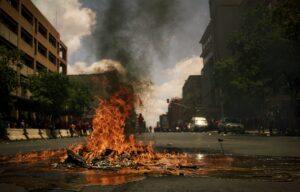This summer has shown us once again of the dangers wildfires pose to our state. As the flames grow higher and containment is difficult to achieve, the risk of damage to our forests, neighborhoods and structures are an issue that will continue to be a threat. It is crucial to do what we can as individual citizens to protect our state from devastating damage. This starts with a defensible space around our homes and structures.
Are You Ready for a Wildfire? Get Rid of Junk and Debris
When a wildfire is burning, small embers are emitted and can travel more than a mile in the wind. These small embers increase the range and danger of spreading the fire as the embers can create smaller spot fires.
In the 1990s, a retired USDA Forest Service fire scientist Jack Cohen developed the “home ignition zone” which helps us understand how we can classify the different “zones” of our home/property and properly take preparation and action to prevent damage. Not only can we prevent damage to our homes, but these practices can help combat the spread of a fire to additional homes and structures.
The National Fire Protection Association breaks down the home ignition zone with tips that we cover briefly in this article.
Immediate zone – your home itself and the area 0 – 5′ from the furthest attached point is the most vulnerable to embers. Start your efforts here by cleaning roofs and gutters of dead leaves and pine needles, move flammable items like leaves and firewood piles away from your exterior walls, and ensure no debris and materials are piling up on any damaged window screens or any other areas around the house.
Intermediate zone – the area 5 – 10′ from the furthest exterior point of your home will need attention on landscaping and creating breaks that will discourage a fire from catching. Clear any loose vegetation that might get caught around large stationary items, keep lawns and grasses mowed to a height of four inches, prune trees up to six to ten feet from the ground, and space trees to eighteen feet a part (this step is more for planning, yet if you already have trees closer together, keep this metric in mind if you plan to redo any landscaping).
Extended zone – the area 30 – 100′ and out to 200′ continues to focus on landscaping techniques that will help disrupt a fire’s path. Get rid of any dead plant or tree debris, remove small conifers that grow between trees and clear vegetation around storage sheds. Trees that are 30 – 60′ from home are recommended to be 12 feet apart and trees 60 – 100′ from your home are recommended to be 6 feet apart.
Yard Debris Removal
Cleaning up your home ignition zones can be a lot of work, but you do not have to do it alone. Junk Away specializes in yard waste removal. As junk hauling locals in the Sacramento area, we care about the well-being of our community and strive to help protect it in any way we can.
Yard debris piles up fast and there is often more than your bin can handle. We will make the clean up fast and effort free. Let us take care of the clean up and hauling so you can focus on maintaining your home’s wildfire preparedness.
In 2015, California Governor Jerry Brown declared a state of emergency. According to Cal Fire, a total of 8,200 wildfires burned a total area of over 880,000 acres in California. Let’s all do our part in prevention and preparation to protect our great state.
Call Junk Away today at (916) 900-8535 and we will give you a free estimate on your yard debris removal!